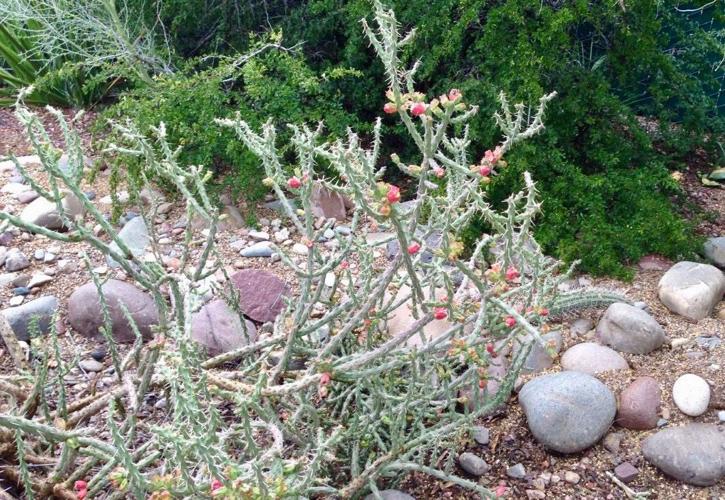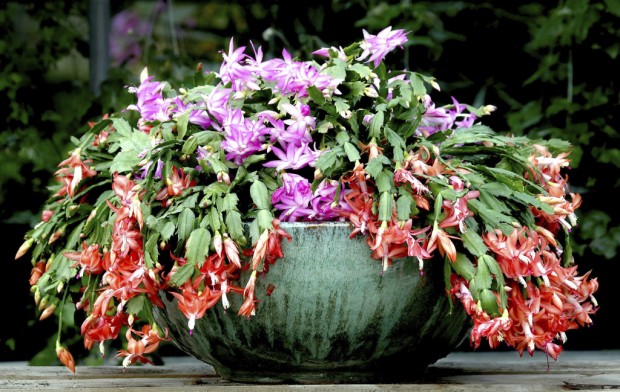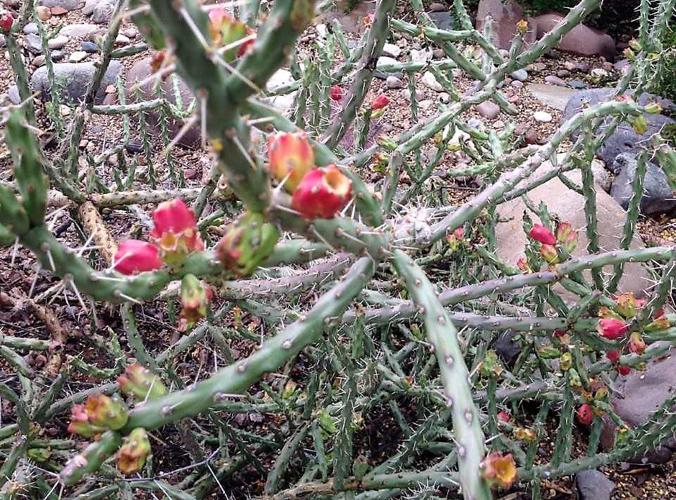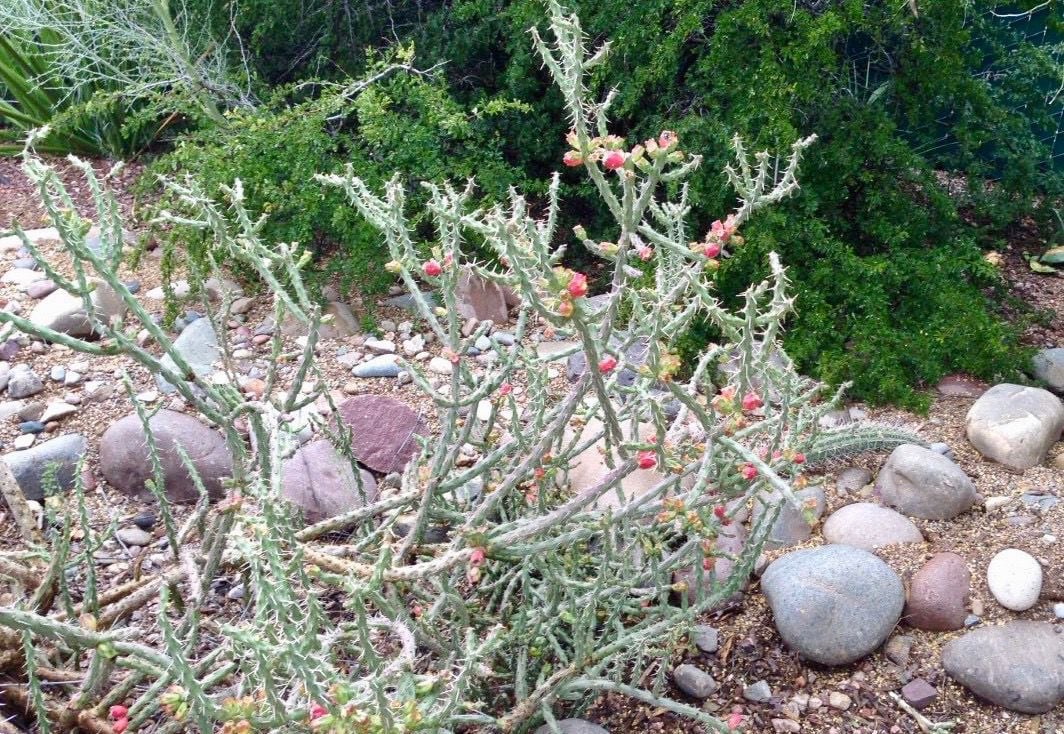This is not a story about the Christmas cactus, a succulent with wintertime blooms and Central American origin.

The Central American Christmas cactus does well in Tucson as long as it's kept out of the cold. Eric Clark, who works at Civano Nursery, says it is easier to care for than poinsettias and will easily bloom every winter.
The Christmas cholla, rather, is native to the Tucson area and puts on a show of its own.
1. They have ornaments!

The Christmas cholla gets its name for the bright red fruit it produces this time of year.
The Christmas cholla, or Cylindropuntia leptocaulis, as its scientifically known, bears bright, red fruit this time of the year — like ornaments on a Christmas tree.
The cholla's scientific name also tells us a bit about it. All chollas bear the name cylindropuntia, "which tells you 'long stick,'" says Adam Farrell-Wortman, the horticulture manager at the Tucson Botanical Gardens. Leptocaulis means "thin-stemmed" — fitting for the cholla with perhaps the skinniest of stems.
2. They'll multiply if you're not careful.
Because they're smaller than other cholla plants, Farrell-Wortman says that can be nice for landscaping. "They get about 3-feet tall, maybe a bit taller," he says. "And a single one will be 3-feet wide. It's a nice, compact cactus."
But, he cautions, that 3-feet wide can quickly turn into 8 feet if you're not careful.
"Like any cholla, it can spread whenever a piece falls to the ground and root and grow another cactus," he adds. Not to mention the barbs that tear skin if they stick you. Give any Christmas cholla you plant a nice perimeter away from where kids and pets play.
3. Some of them have beautiful, white flowers.
If you plant a Christmas cholla, ask the nursery about the cultivar you're buying. Springtime blooms range in color from creamy white to orange, Farrell-Wortman says.
Plant in February if you can, but because they're native plants, they'll do OK even if you plant now. In nature, birds eat the fruit and distribute the seeds, meaning the plants tend to sprout during the winter rains.
Native plants are the best because they can handle frost and require minimal care. Just make sure you clean up fallen pieces so the cholla doesn't take over your whole yard.







